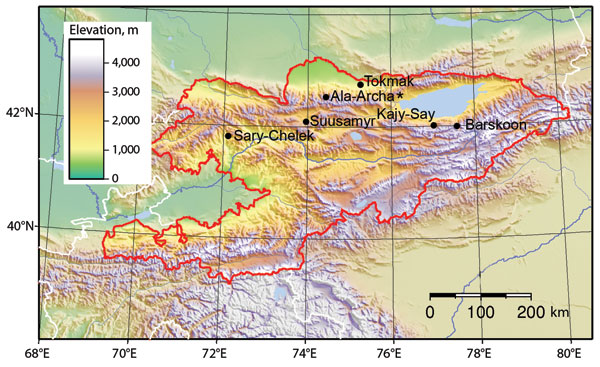Volume 17, Number 5—May 2011
Dispatch
Tick-Borne Encephalitis Virus, Kyrgyzstan
Figure 1

Figure 1. Animal trapping sites in Kyrgyzstan, with topographic characteristics shown. Ala-Archa (star) is the location of tick-borne encephalitis virus and a possible human case of tick-borne encephalitis.
Page created: August 08, 2011
Page updated: August 08, 2011
Page reviewed: August 08, 2011
The conclusions, findings, and opinions expressed by authors contributing to this journal do not necessarily reflect the official position of the U.S. Department of Health and Human Services, the Public Health Service, the Centers for Disease Control and Prevention, or the authors' affiliated institutions. Use of trade names is for identification only and does not imply endorsement by any of the groups named above.